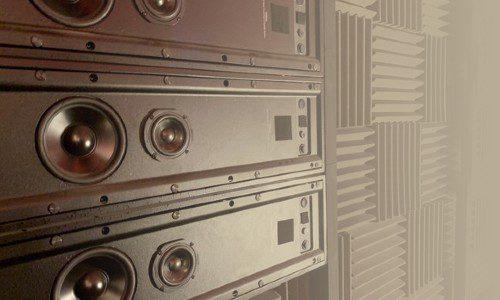Meridian Audio has launched its High-Power Array (HPA), a technology upgrade that the venerable British audio company says optimizes the output and coverage of sound when three Meridian architectural loudspeakers are arranged in a close-proximity array configuration.
The company explains that it developed the technology to address challenges with achieving high SPL targets across an entire listening area in large home theaters while aiming toward CEDIA guidelines of THX Reference level 105dB for the main listening position.
This may lead to a few system design and installation obstacles, according to Meridian. It can necessitate installers having to move to compression drivers that lack the required high frequency extension, resolution and clarity; create a deeper installation depth for larger high SPL speakers; and use a greater number of larger power amps in the rack that generate more heat.
HPA technology enables integrators to install three identical DSP loudspeakers in a stack or array configuration and ensure minimal interference and spectral variation between speakers, Meridian explains. This results in an even response for every listener in the room, and allows an installer to maintain the 100mm (3.94 inches) mounting depth while the additional channels don’t require any extra equipment in the rack.
Meridian HPA Applies to Various Architectural Speakers
“By considering what is both objectively and subjectively important, we have been able to engineer an elegant solution to a real-world problem presented to us by our design and integration team,” says Dr. Laurence Hobden, research and applied technologies team leader at Meridian.
“HPA processing minimizes the interference between close proximity loudspeakers by carefully controlling their magnitude and phase responses. This allows multiple loudspeakers to be used as a single channel, offering increased SPL whilst maintaining detail and fidelity.”
Available for use with Meridian’s architectural range — including the DSP520.2, DSP640.2, DSP750, and DSP730 — the three loudspeakers are installed with the center speaker assigned as the “primary” product and the outer two speakers classed as the “secondary” products, the company says.
This is the same whether installed vertically or horizontally. An installer just has to send one RS232 command to each loudspeaker within an array.
Spacing between individual speakers should be 50mm (1.97 inches) or less — the closer the speakers, the better the performance, Meridian adds. For horizontal installs, the listener’s ears should be positioned directly in line with the primary loudspeaker, and at least 4m (13.1 feet) from the array; for vertically mounted loudspeakers, the line should target the tweeter drivers, the company says.







